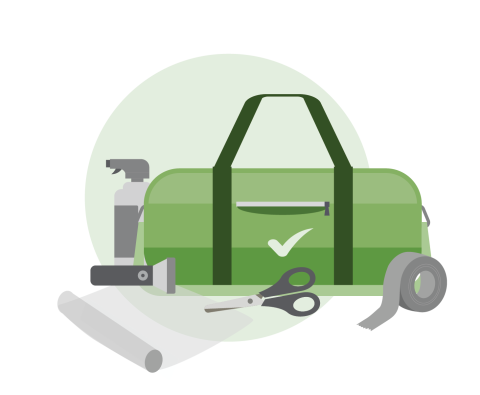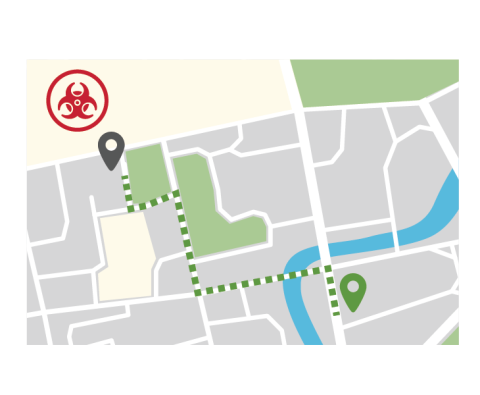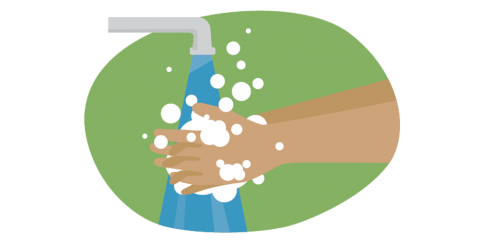Chemicals and Hazardous Materials Incidents

- العربية
- English
- Español
- Français
- Kreyòl
- 日本語
- 한국어
- Русский
- Tagalog
- Tiếng Việt
- 简体中文
Hazardous materials can include explosives, flammable and combustible substances, poisons and radioactive materials. Chemical agents are poisonous vapors, aerosols, liquids and solids that have toxic effects on people, animals or plants. Emergencies can happen during the production, storage, transportation, use or disposal of hazardous materials. You are at risk when chemicals are used unsafely or released in harmful amounts where you live, work or play.
Signs of a chemical release include difficulty breathing, eye irritation, loss of coordination, nausea or burning in the nose, throat and lungs. The presence of many dead insects or birds may indicate a chemical agent release.
Before an Incident
Many communities have Local Emergency Planning Committees (LEPCs) responsible for collecting information about chemicals and hazardous materials in the community and planning for accidents. These materials are available to the public upon request. Contact your local emergency management office for more information on LEPCs.

- Build an Emergency Supply Kit and include duct tape, scissors and plastic to cover doors, windows and vents.
- Make a Family Emergency Plan.
- Know how to operate your home’s ventilation system.
- Identify an above-ground shelter room with as few openings as possible.
- Read more about sheltering in place.
During an Incident
Listen to local radio or television stations for detailed information and follow instructions carefully. Remember that some toxic chemicals are odorless. Instructions may differ depending on the threat and risk of exposure. Sometimes, it may be safer to shelter inside your home, other times it may be safer to evacuate.

If told to evacuate:
- If asked to evacuate, do so immediately. To find a public shelter, text SHELTER + your ZIP code to 43362 to find the nearest shelter in your area (example: shelter 12345).
- Quickly try to figure out which areas are affected or where the chemical is coming from, if possible, and get away immediately.
- If the chemical is inside your building, get out of the building without passing through the contaminated area, if possible.
- If you can't get out of the building or find clean air without passing through the affected area, move as far away as possible and shelter-in-place.
If told to stay indoors:
- Bring pets inside.
- Seek shelter in an internal room. Close and lock all exterior doors and windows. Close vents, fireplace dampers and as many interior doors as possible. Seal the room with duct tape and plastic sheeting.
- Turn off air conditioners and ventilation systems, or set ventilation systems to 100 percent recirculation so that no outside air is drawn into the building.
- Seal gaps under and around the following areas with wet towels, plastic sheeting, duct tape, wax paper or aluminum foil:
- Doorways and windows
- Air conditioning units
- Bathroom and kitchen exhaust fans
- Stove and dryer vents with duct tape and plastic sheeting
If outside when an incident occurs:
- Quickly decide what is the fastest way to find clean air. Move away immediately, in a direction upwind of the source.
- If in a car, keep car windows and vents closed and shut off the air conditioner and heater.
- Find the closest building to shelter-in-place.
After an Incident
Do not leave the safety of a shelter to go outdoors, including to help others, until authorities say it is safe to do so. If you have evacuated, return home only when authorities say it is safe.
If you are affected by a chemical agent and medical help is not immediately available, the best action is to decontaminate yourself and help others to do so, if possible.
How to decontaminate:

![]()


